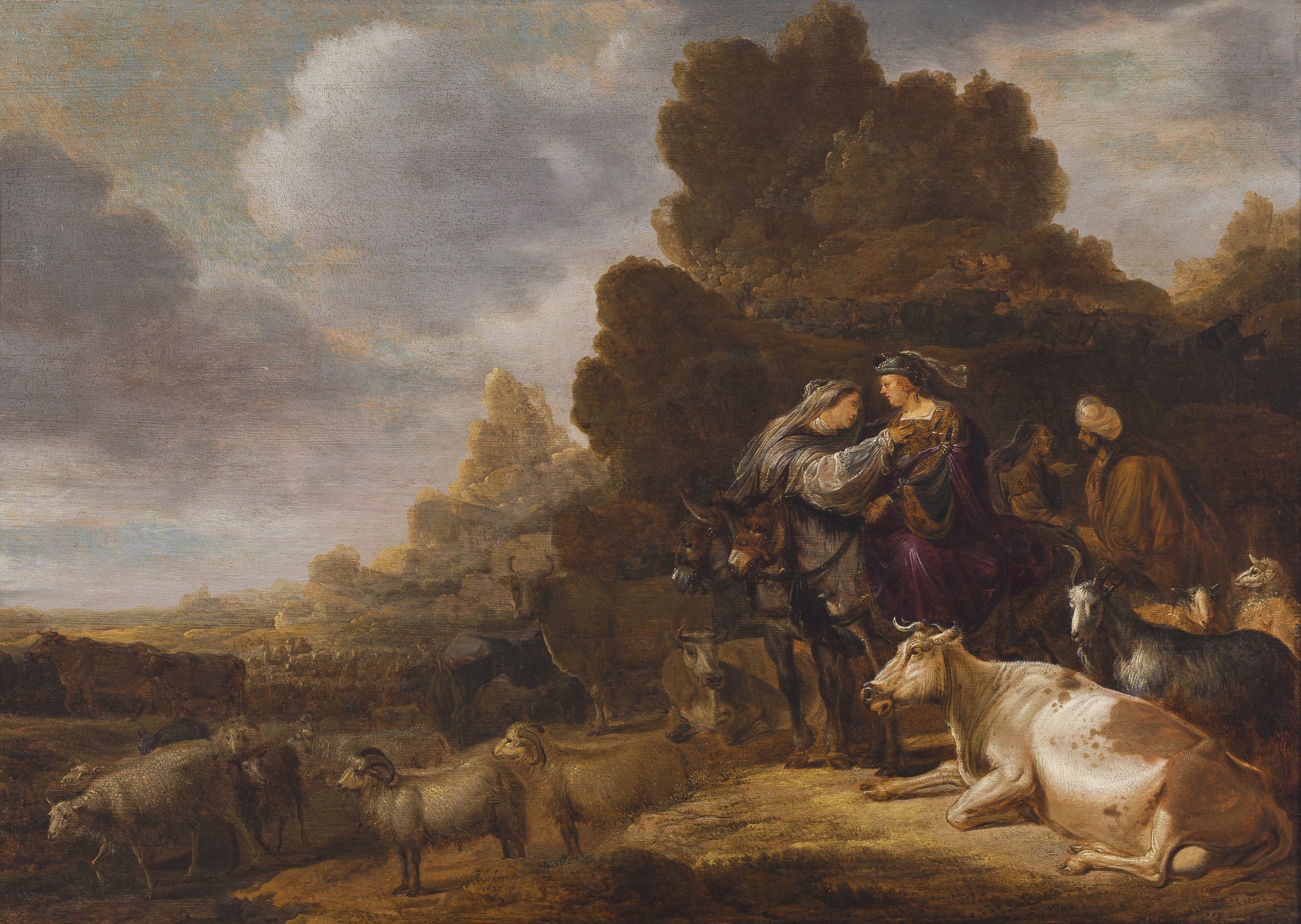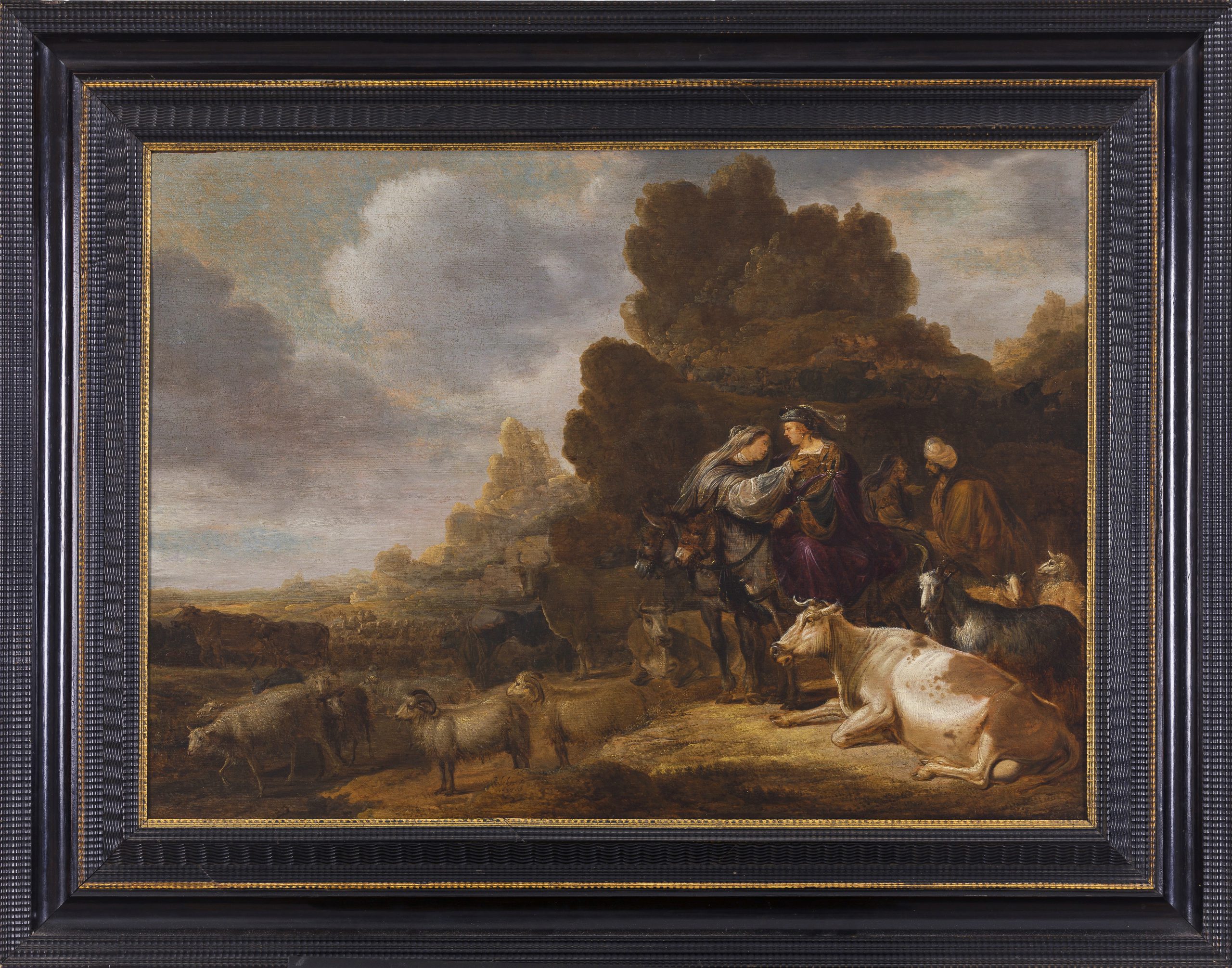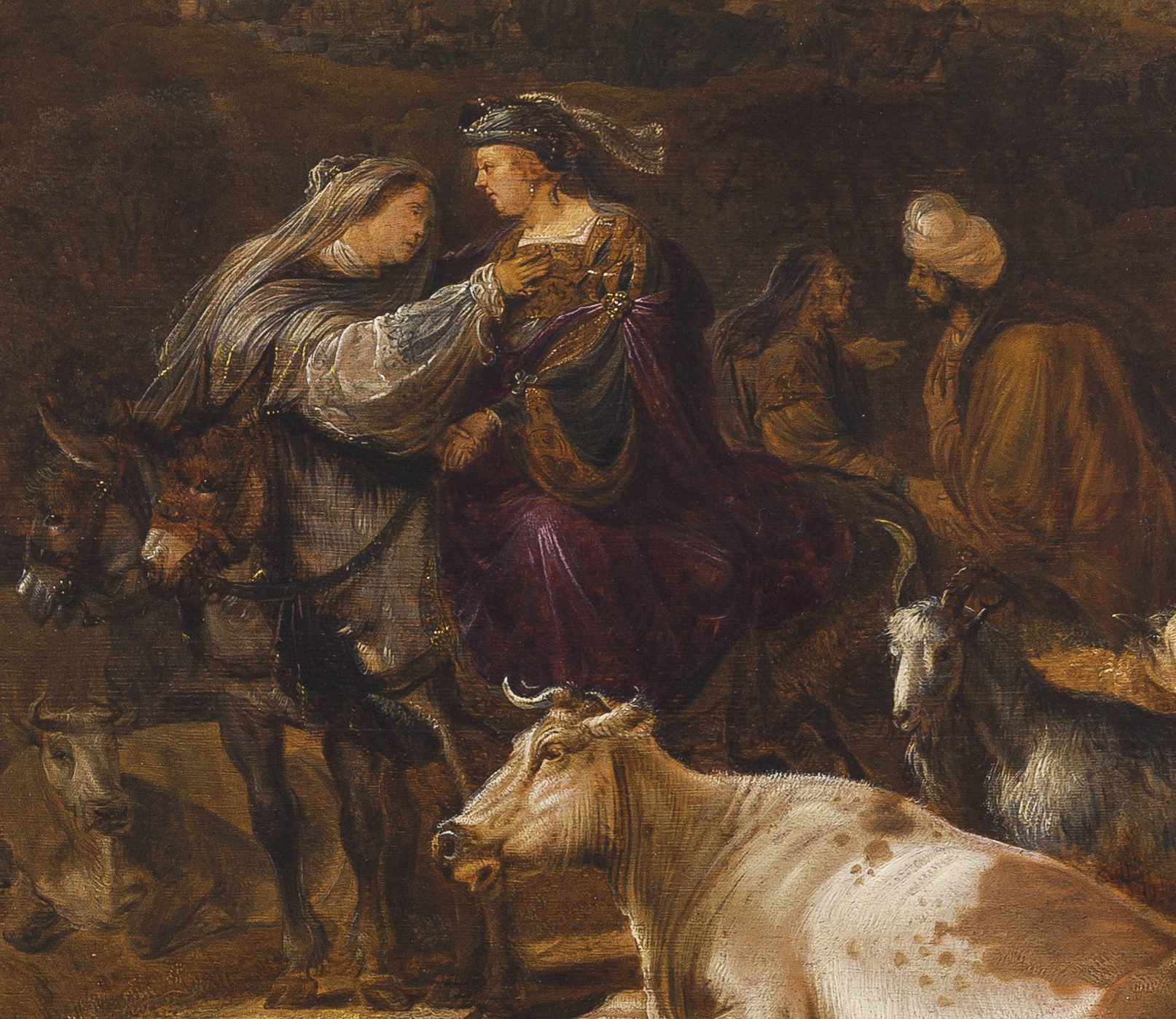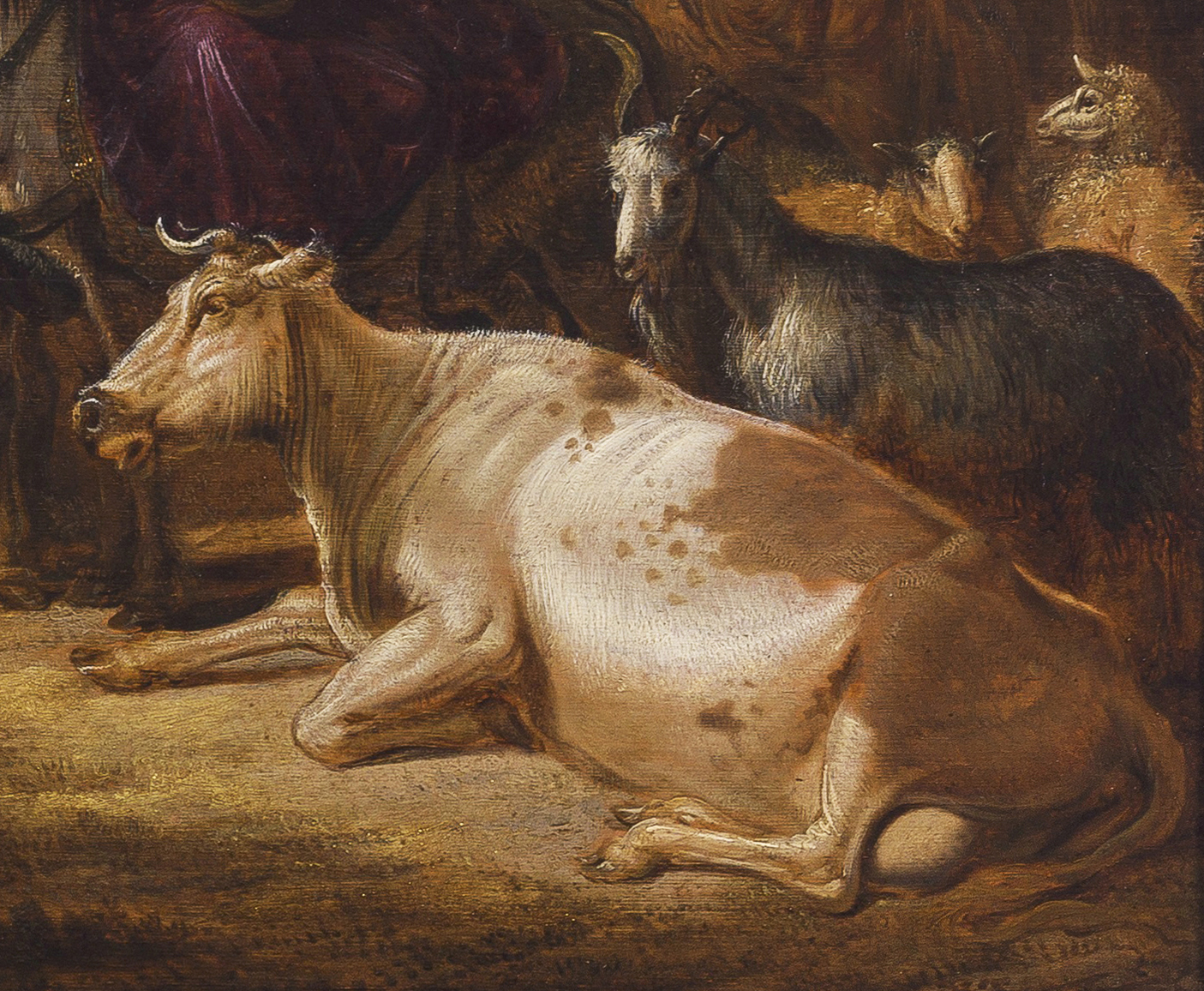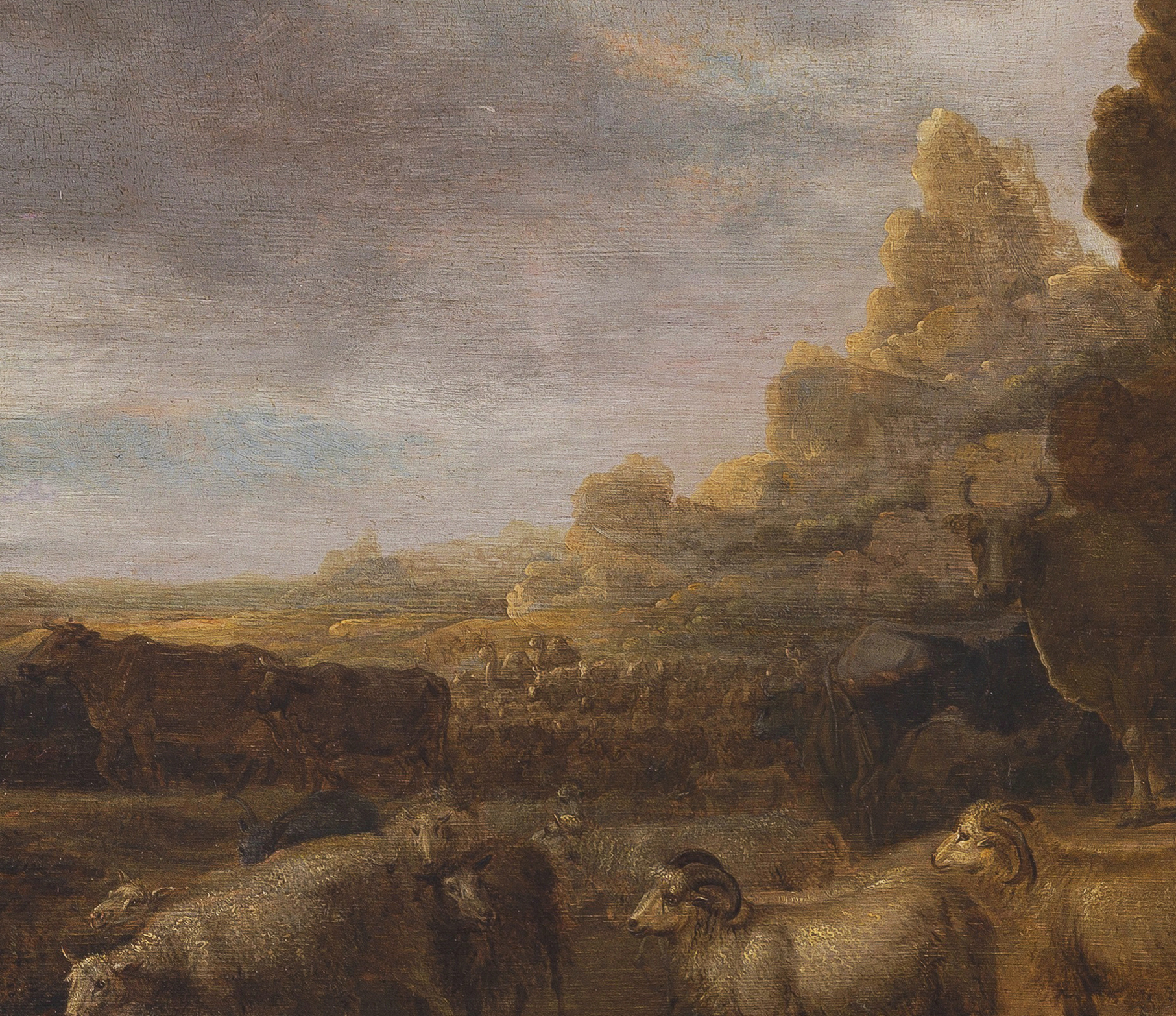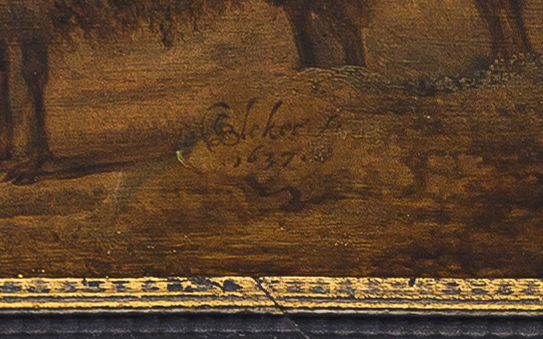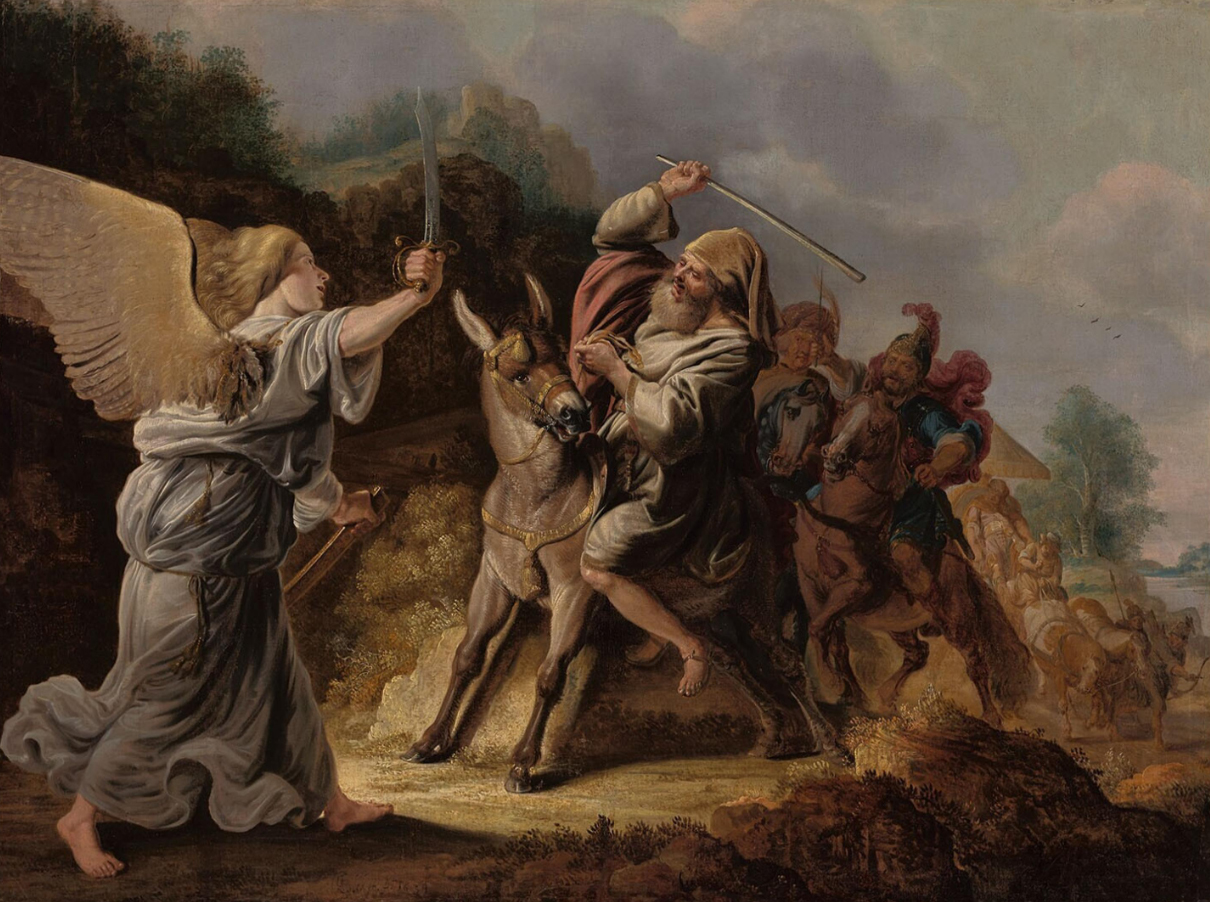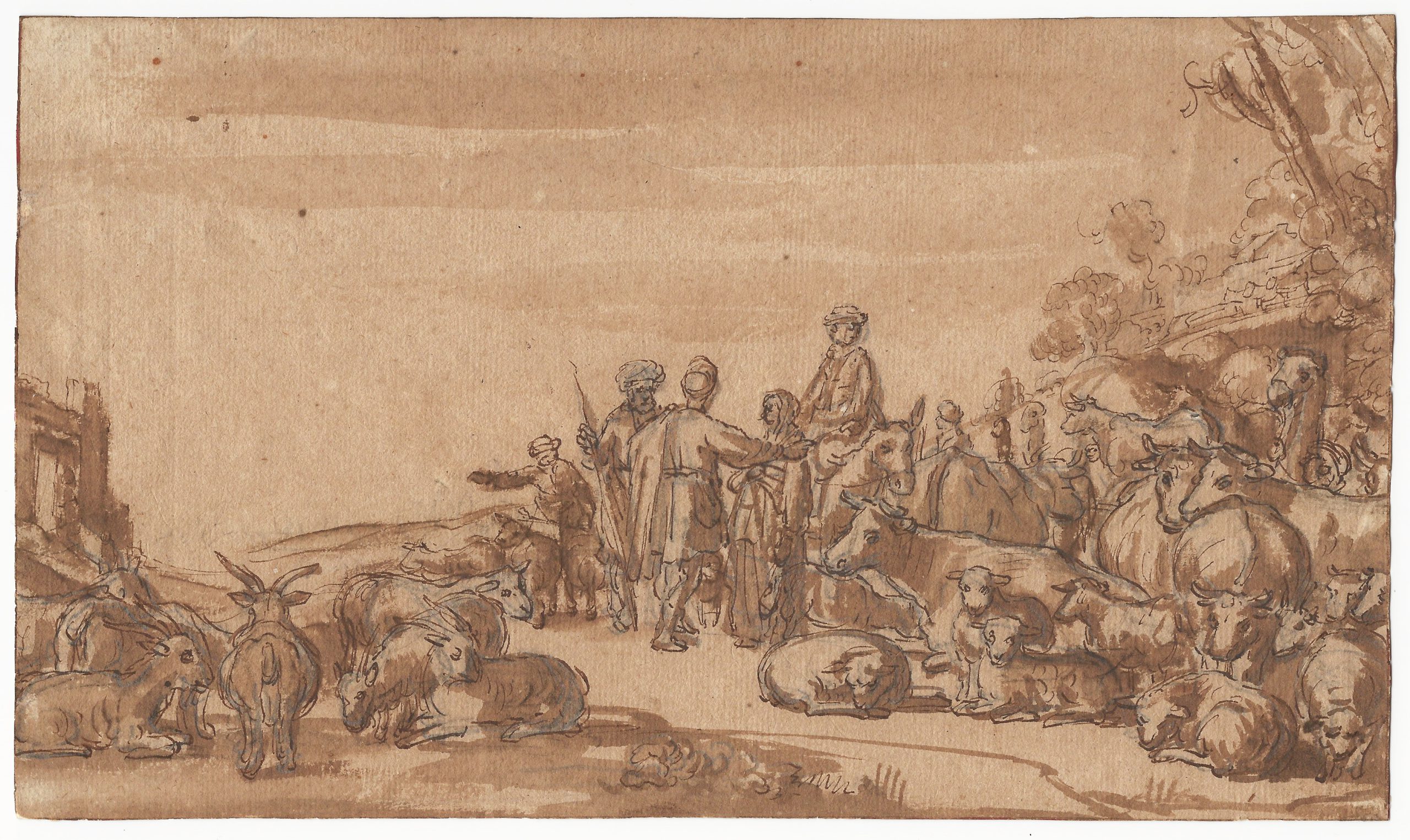GERRIT CLAESZ BLEKER (Haarlem 1592/93 – 1656 Haarlem)
Gerrit Claesz Bleker (Haarlem 1592/93 – 1656 Haarlem)
The Separation of Abraham and Sarah from Lot and his Wife
Oil on panel, 57 x 79 cm (22.4 x 31.1 inch); presented in an ebonised and partly gilded ripple-moulding frame of 17th-century model
Signed and dated ‘G.Bleker f. / 1637’ (lower centre)
Provenance
~ Anonymous sale, Léonard André Clisorius and Marie Gabriel Serreau, Paris, 26 December 1810, lot 47 (‘Bleker, 1635 [sic]. La Séparation de Loth et d’Abraham, paysage’, sold for 12 frs 55)
~ Dr Ephraim I. Shapiro, London, c. 1953-1979; his sale, Christie’s, London, 14 December 1979, lot 2
~ with Faustus Gallery, London, 1980
~ anonymous sale, Phillips, London, 27 October 1987, lot 101
~ anonymous sale, Christie’s, London, 10 July 1998, lot 138
~ Private collection, The Netherlands
Literature
~ Christian Tümpel, Het Oude Testament in de schilderkunst van de Gouden Eeuw, exh. cat. Amsterdam (Joods Historisch Museum) / Jerusalem (Israel Museum), 1991, p. 165, fig. 109 (black/white)
~ Christian Tümpel, Im Lichte Rembrandts, exh. cat. Münster (Westfälisches Landesmuseum für Kunst und Kulturgeschichte), 1994/95, p. 165, with black/white ill.
***
Gerrit Claesz Bleker was born in Haarlem around 1592 and was most probably taught by Claes Moeyaert (1591–1669).1 Bleker was first mentioned as an independent painter in 1622 and became a member of the guild of St Luke in 1634. By 1625 he was already settled as a painter of landscapes in Haarlem, and was mentioned as such in the description of the town by Samuel Ampzing of 1628, together with Salomon van Ruysdael.2 Together with his brother Jan, he was a musketeer in the St Joris civic guard. From around 1634 to 1654 he lived and worked in Amsterdam on the Keizersgracht; he then bought a country house in Groenendaal, near Heemstede, named ‘De Driesprongh’ from Pieter van de Venne, a cousin of Bartholomeus van der Helst. A neighbouring house, ‘Het Lam’, was owned by Jan Miense Molenaer and Judith Leyster. The artist’s son Dirk Bleker also became a painter, and his daughter Maria married the horse painter Jacobus Koolen.
Bleker is considered a representative of the Pre-Rembrandtist school, who were mostly active in Amsterdam, but also in Haarlem, including artists such as his teacher Moeyaert, the Pynas brothers and Pieter Lastman.3 They specialised in historical and biblical themes, painted in a colourful and precise manner. The young Rembrandt was greatly influenced by them and indeed studied with Lastman. During the course of his artistic career, Bleker gradually moved away from his earlier colourful works to a more monochrome and subdued palette, in keeping with artistic developments in Haarlem during the period, but remained faithful to the tradition themes derived from Classical mythology and the bible.
The young Paulus Potter is thought to have studied with Bleker during the middle of the 1630s, exactly around the time when the present work was painted. Bleker’s paintings were of great influence on the development of Potter’s art, particularly his naturalistic depictions of cattle in open landscapes. The resting cow on the right foreground is among the best that Bleker ever painted, and it is tempting to imagine the young Potter studying its execution in detail.
In this well preserved panel Bleker has depicted the biblical story of the departure of the families of Abraham and Loth, as recounted in Genesis 13:8-9. Although this story was the subject of several sixteenth-century engravings, the present painting appears to be the only treatment of it in a painting from the Golden Age, its subject correctly identified by Professor Christian Tümpel.4 In terms of handling and colouring, it can be compared to Bleker’s painting of Balaam and his Ass in the Boijmans-van Beuningen Museum in Rotterdam, which is dated 1634 (fig.).5 A drawing which may be a primo pensiero for this painting is also part of the collection of White Rose Fine Art, and can be found here (fig.).6
1. For the artist, see the biography by Ingrid van Thiel-Stroman in Pieter Biesboer and Neeltje Köhler (eds.), Painting in Haarlem 1500-1850: the collection of the Frans Hals Museum, Ghent 2006, pp. 109-110.
2. See A. Tümpel, The pre-Rembrandtists, exh. cat. Sacramento (Crocker Art Gallery) 1974.
3. ‘How could I overlook Bleker and Ruysdael, / Who are good in landscapes, and moreover, in figures’, cited by Van Thiel-Stroman, op. cit., p. 109.
4. Christian Tümpel, Het Oude Testament in de schilderkunst van de Gouden Eeuw, exh. cat. Amsterdam (Joods Historisch Museum) / Jerusalem (Israel Museum), 1991, p. 165.
5. Oil on canvas, 95.5 x 128.5 cm, inv. no. 1060 (OK).
6. Black chalk, pen and brown ink, brown wash, partial brown ink framing lines, watermark Strasbourg lily in crowned shield, 168 x 287 mm
